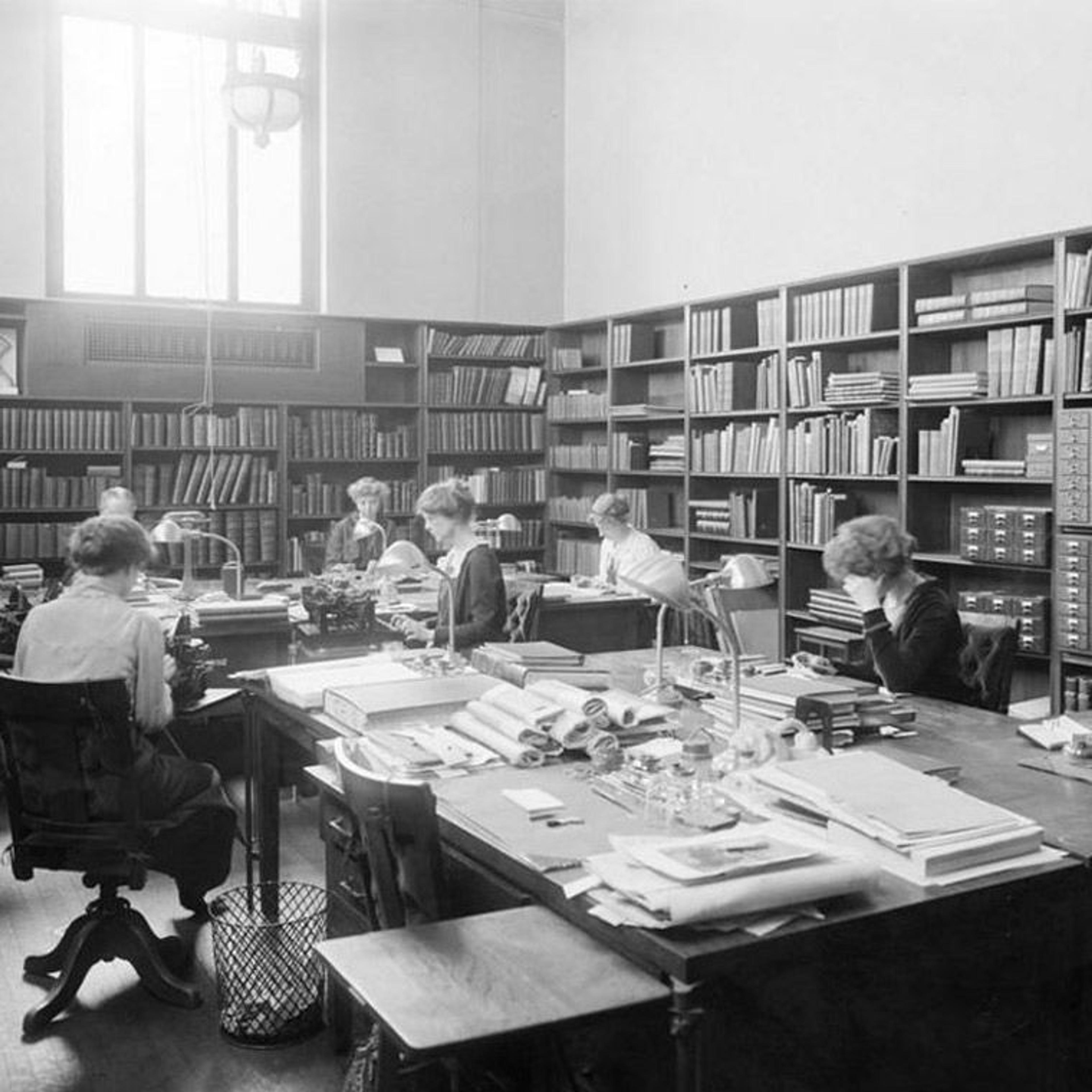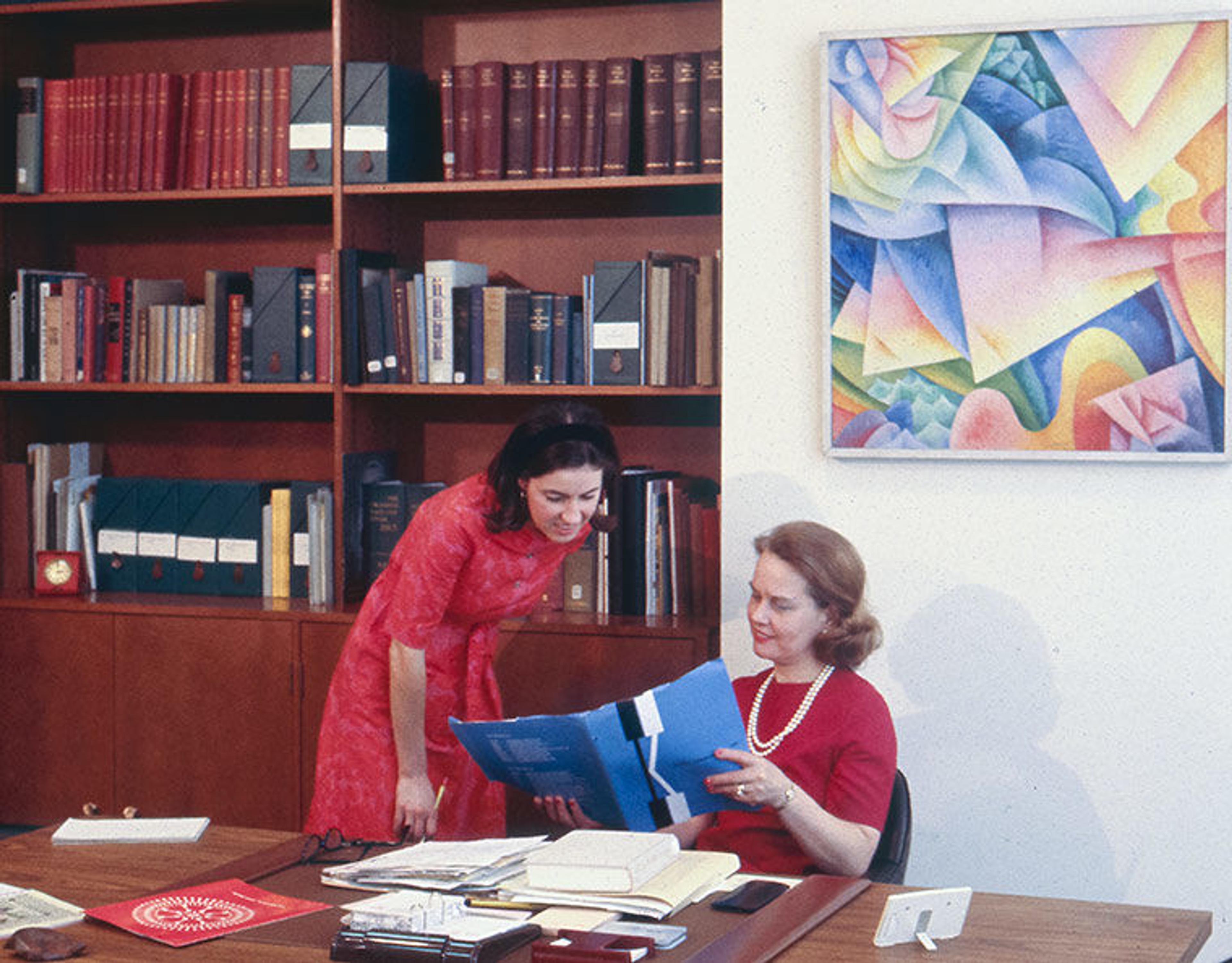
Elizabeth Usher, Chief Librarian 1968–80. Among the many patrons she assisted, Mrs. Usher enjoyed helping Katherine Hepburn, Spencer Tracy, and Jacqueline Kennedy Onassis with their research.
Along with The Met, Watson Library is celebrating its 150th anniversary with a series of blog posts and four vitrine displays. The images below are a selection of the documents and photographs on display through March 15, 2020, illustrating the library's history, including its architectural transitions, leaders, supporters, staff, and loyal patrons.
In 1881, Herbert Bishop, a Museum trustee, established an endowment for the library of $2,000, which he later increased to $5,000. This is noted in the 1905 Annual Report: "The feeling of encouragement that this gift of Mr. Bishop afforded the librarian a quarter of a century ago is still with him, a distinct and pleasant memory." The certificate below designates Bishop a patron of The Met, in acknowledgement of his gift.
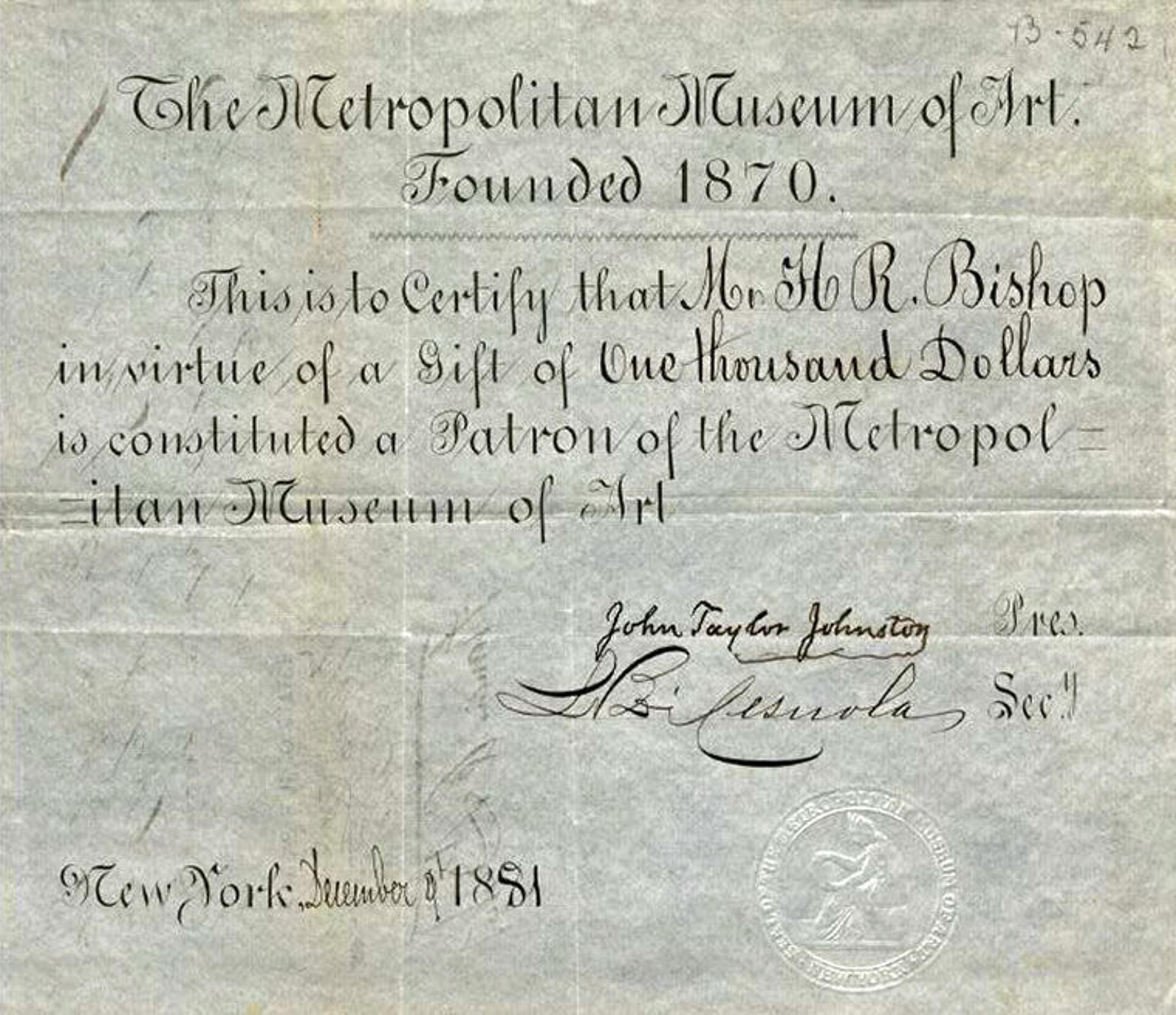
1881 Certificate designating Herbert Bishop a patron of The Met
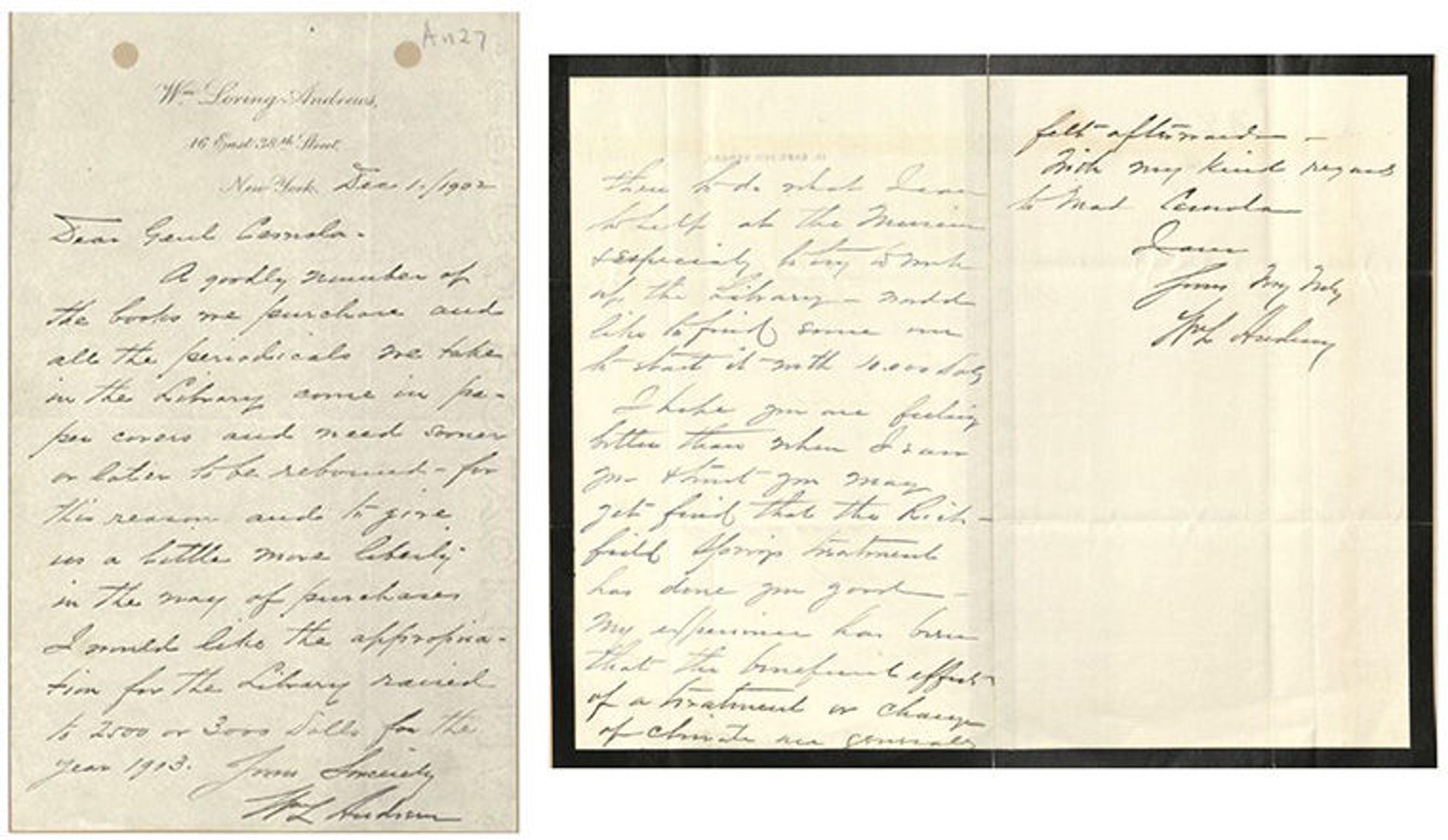
William Loring Andrews letters to Cesnola
Steps towards the formation of a "good working library" were taken in 1879, when the Museum moved from its second location, in the Cruger Mansion on 14th Street, to Central Park.
Another early advocate of the library was William Loring Andrews (1837–1920). Andrews was appointed first librarian in 1880 by The Met's first Director, Luigi Palma di Cesnola (1832–1904). The above letters from Andrews to Cesnola request an increase in library appropriation funds. The one at left, which was written soon after the opening of The Met's first building in Central Park, asks for the sum of $10,000 to build the collection of the library.
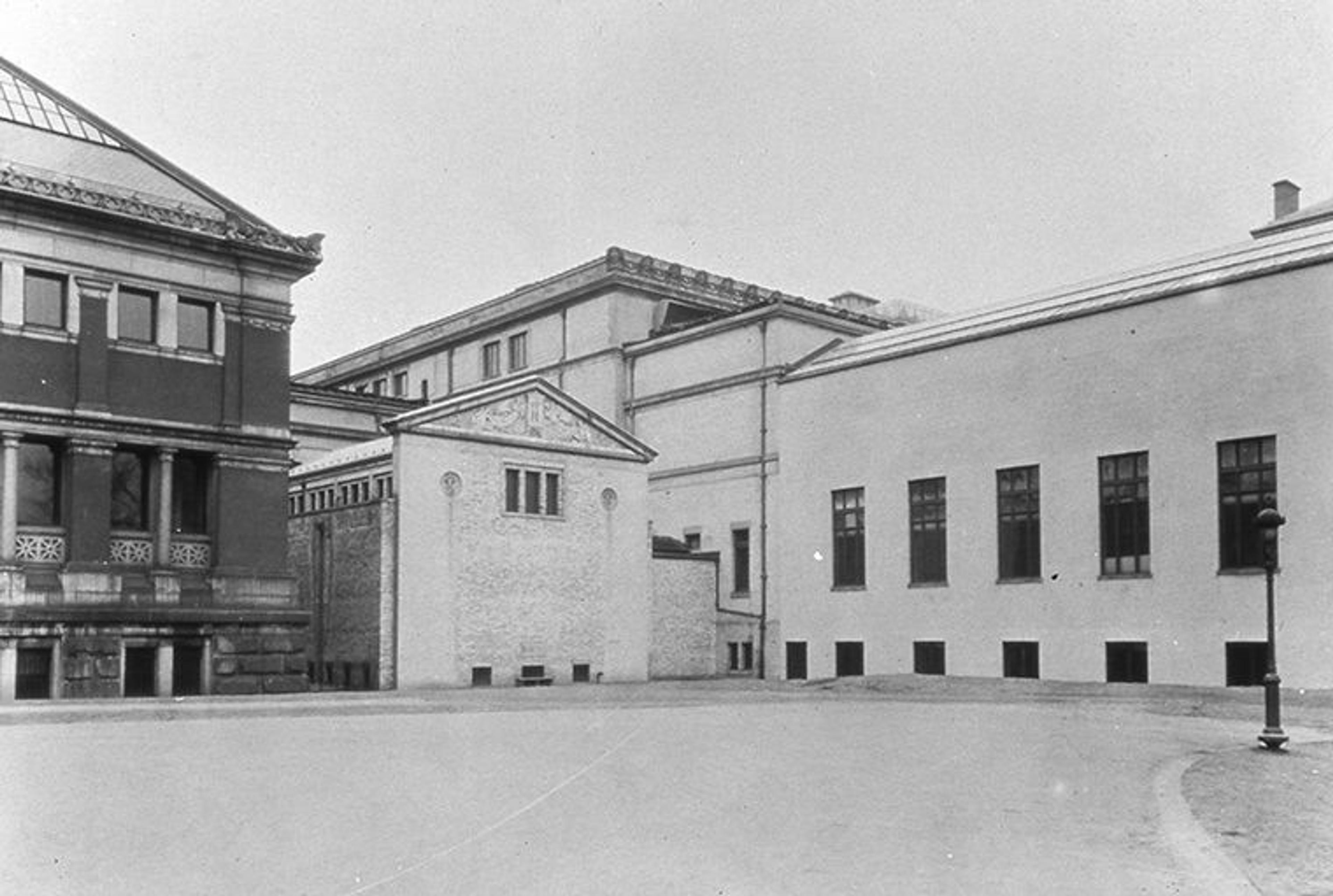
First library building, photographed in 1911
The library was originally a freestanding building, which was accessible from the Museum's former entrance in Central Park. As visitors approached the Museum, the library would have been seen at the center. In retrospect, this could be seen as a symbolic gesture that carries through to today: the library remaining at the center of research in the Museum. The terracotta pediment, "The Adoration of the Shrine of Truth," was originally part of the facade of the Madison Square Presbyterian Church, New York.

McKim, Mead, and White furniture designs for the new library, known as Wing G, 1909
In 1904, the trustees hired McKim, Mead, and White to design a comprehensive master plan of the Museum. For the next thirteen years, the firm constructed five exhibition wings, a library, a new boiler house, as well as this elegant card catalog, chair, and tables.
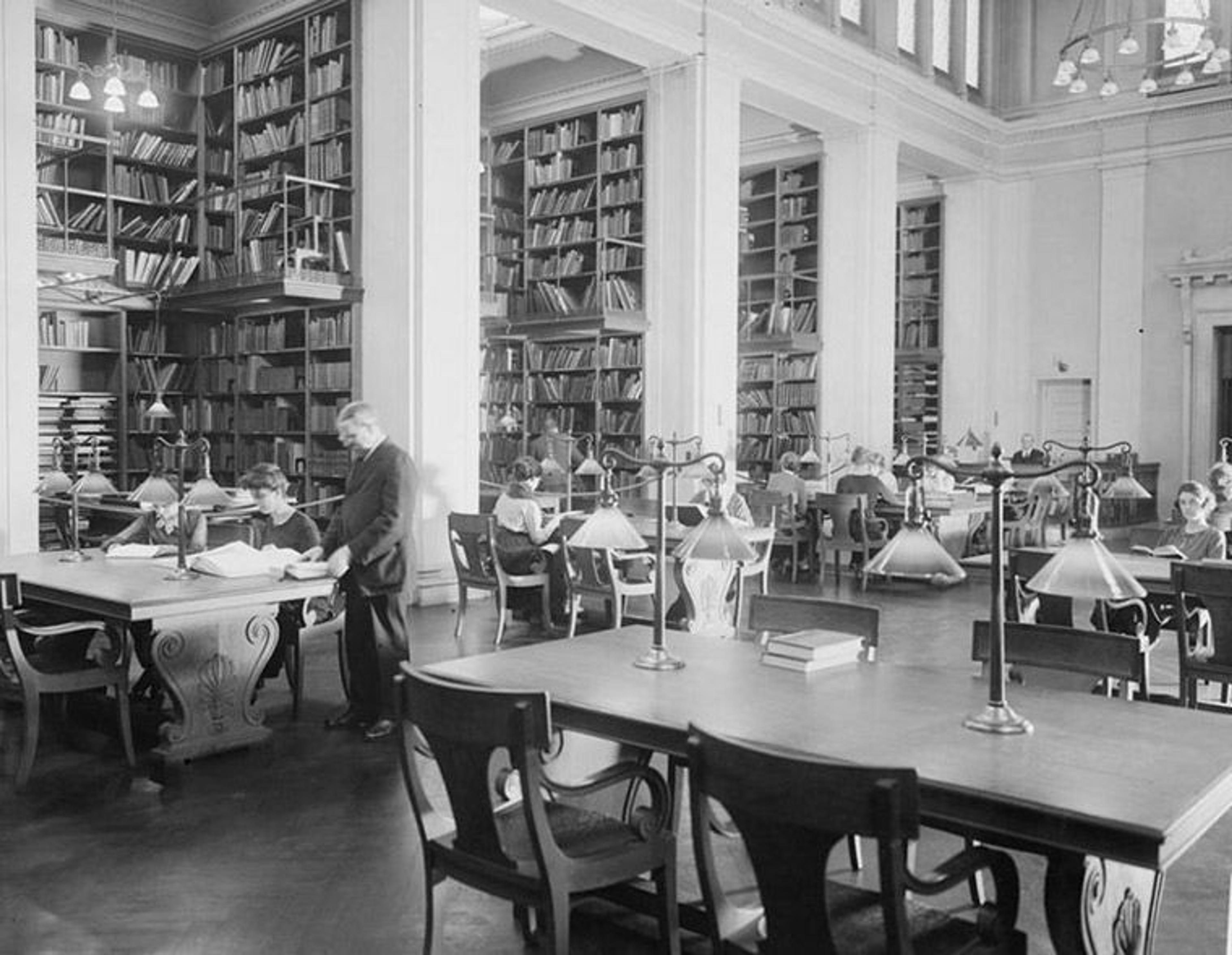
Main library reading room, April 1920
The new McKim, Mead, and White Library reading room was in the classical Beaux-Arts style with soaring balcony stacks. The photograph above captures an active reading room filled with engaged scholars, just like ours is today.

Library work room, March 1914
The McKim, Mead, and White design with its large, high windows, afforded staff ample light. The staff member at far right hides her face, while a colleague at left works on an Oliver typewriter. Another staff member concentrates on penning a card-catalog entry.
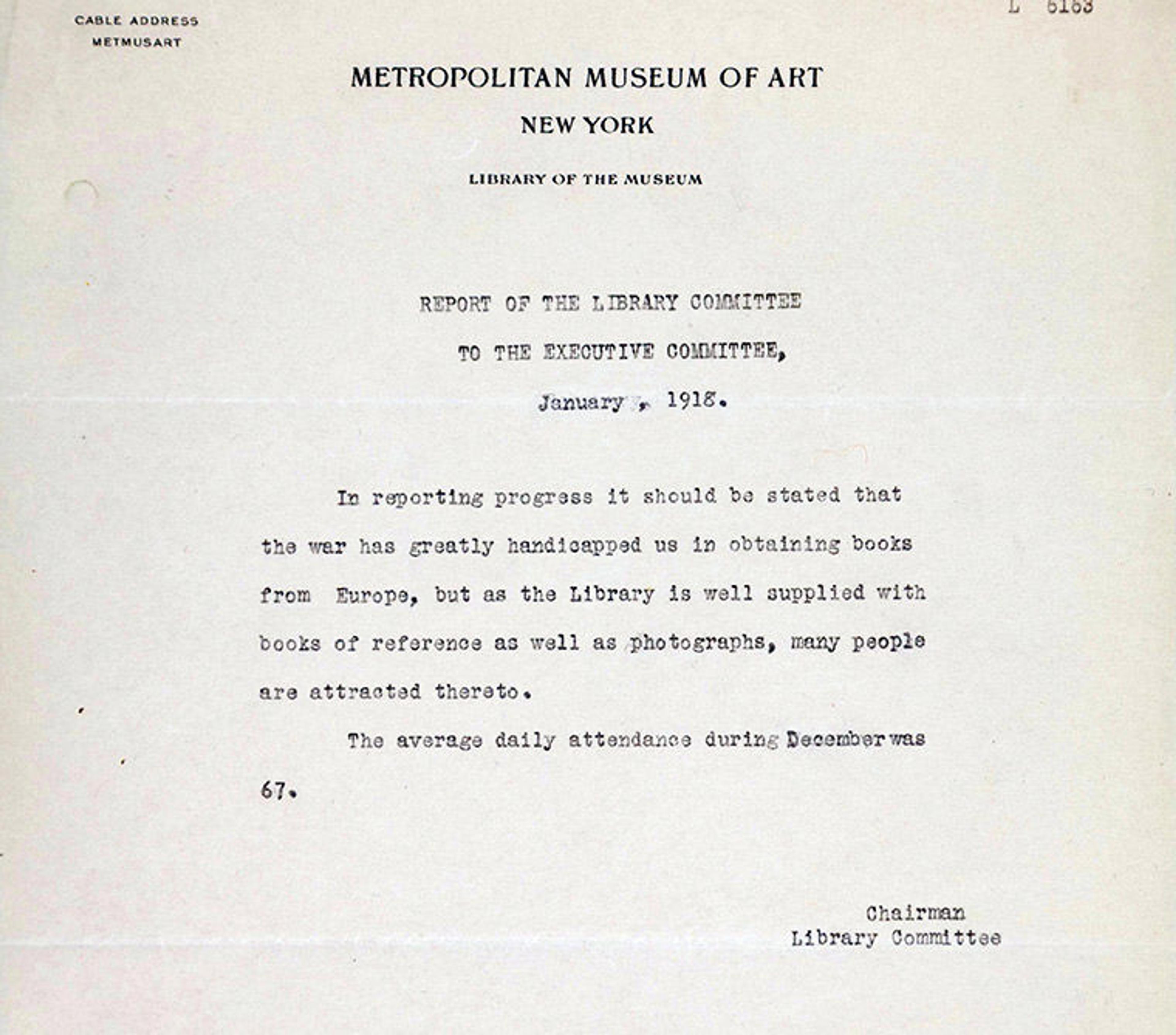
Wartime library report, 1918
Watson's priorities have always been accessibility for its patrons, as well as outstanding customer service. This record from World War I illustrates that the library was "well supplied with books," even during difficult times. In addition, the library remained open on weekends, with the "record of Sunday visitors" documenting fifty patrons on a mid-December Sunday, with 104 books circulating.
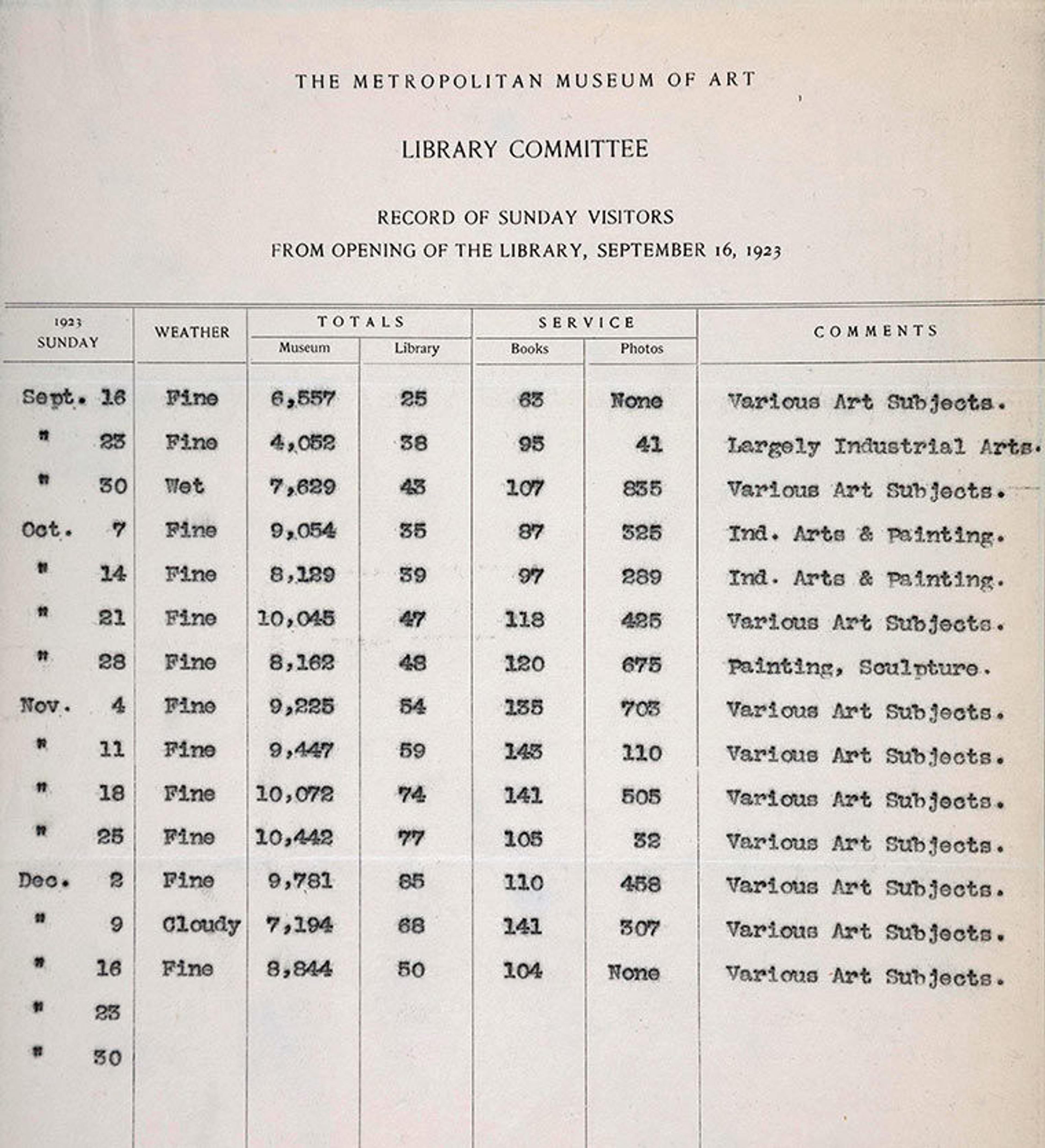
Record of Sunday visitors, 1923
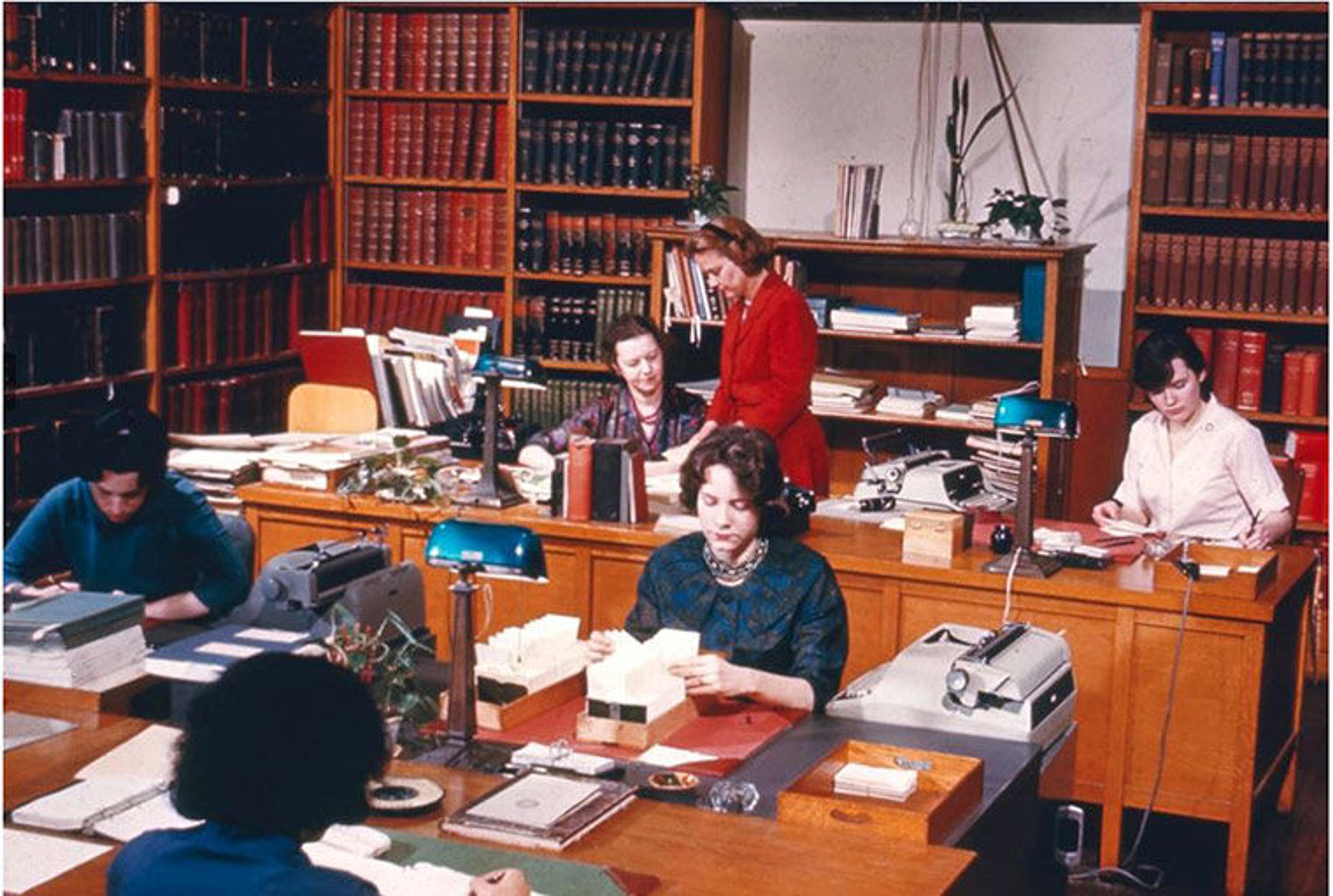
Catalog reference room, 1961
Comparing the staff photographs of the early 1960s and 1920s, one notices that the clothing and hairstyles have changed while one element remains the same: staff working intently, ordering, cataloging books and journals, and taking care of the many tasks necessary to maintain and develop the Museum's library.
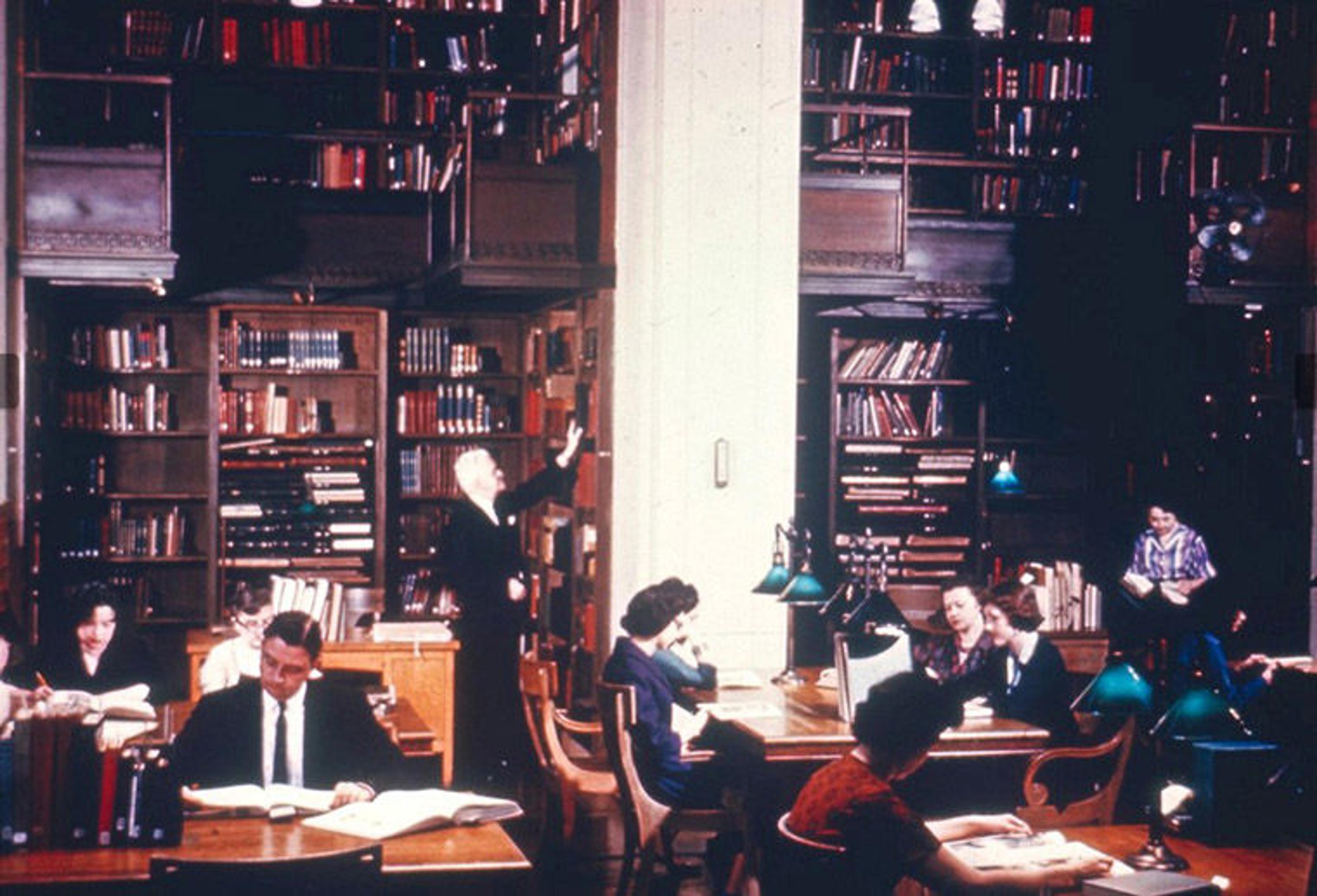
Main reading room, 1961
The McKim, Mead, and White library stood for over forty years. This colorful photograph shows the mezzanine stacks in the reading room from the early 1960s. Four years after this picture was taken, the library was razed to make room for a new library named after Thomas J. Watson, in acknowledgement of his many gifts to the Museum.

Thomas J. Watson Library designation memo, 1959
The above meeting minutes document the approved suggestion by Mrs. Thomas Watson, to designate the new library as the "Thomas J. Watson Library" after her late husband.
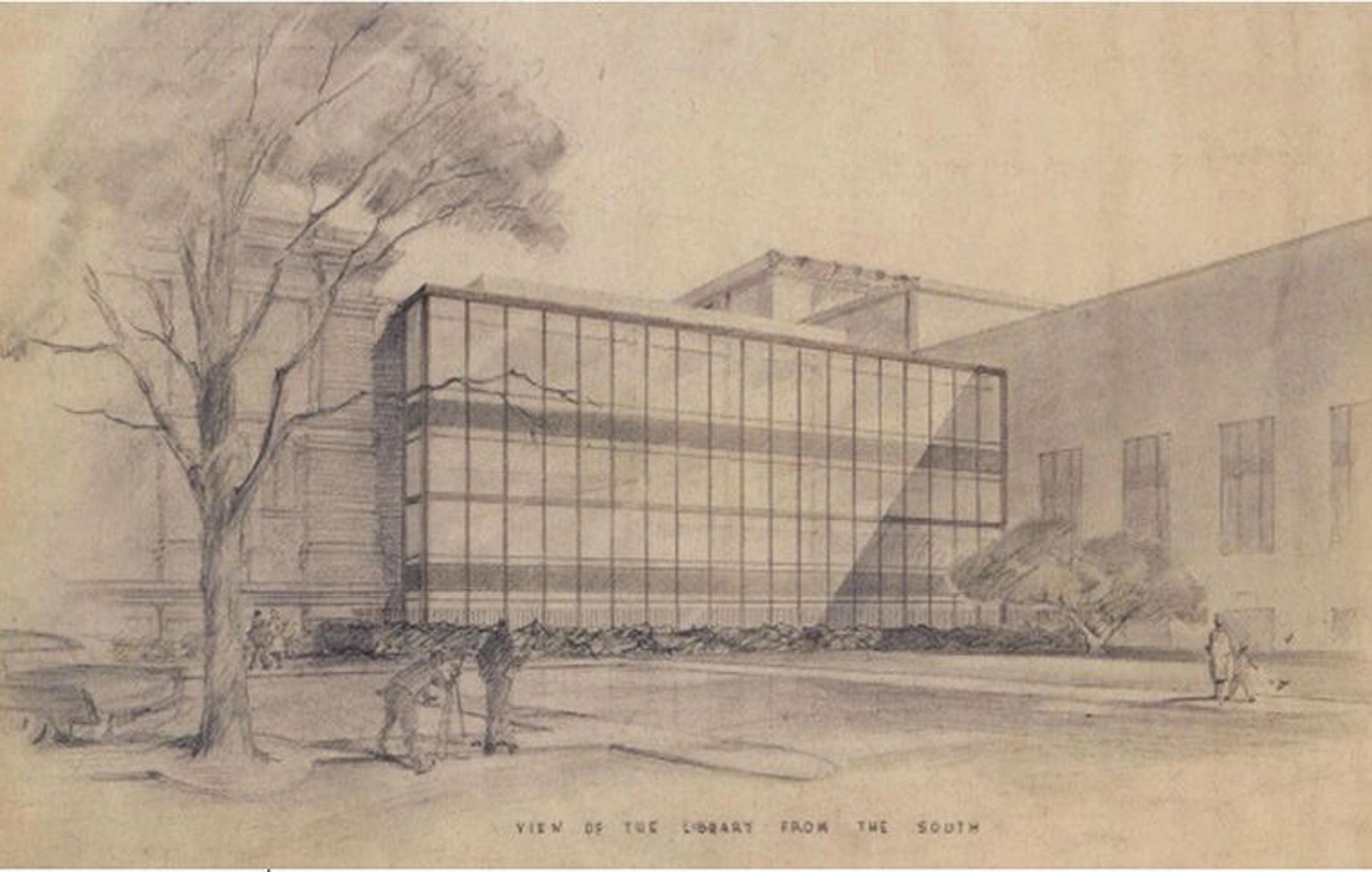
View of the Library from the South, 1958
The new library had a modernist interior design and the exterior had a south-facing glass curtain wall, which exemplified the international style of the architecture of the day. The project was spearheaded by James Rorimer, the Museum's sixth director, and designed by the architects Brown, Lawford, and Forbes. The above drawing shows the exterior, southern view of the library. Patrons in the reading room would have had an unobstructed view of Central Park.
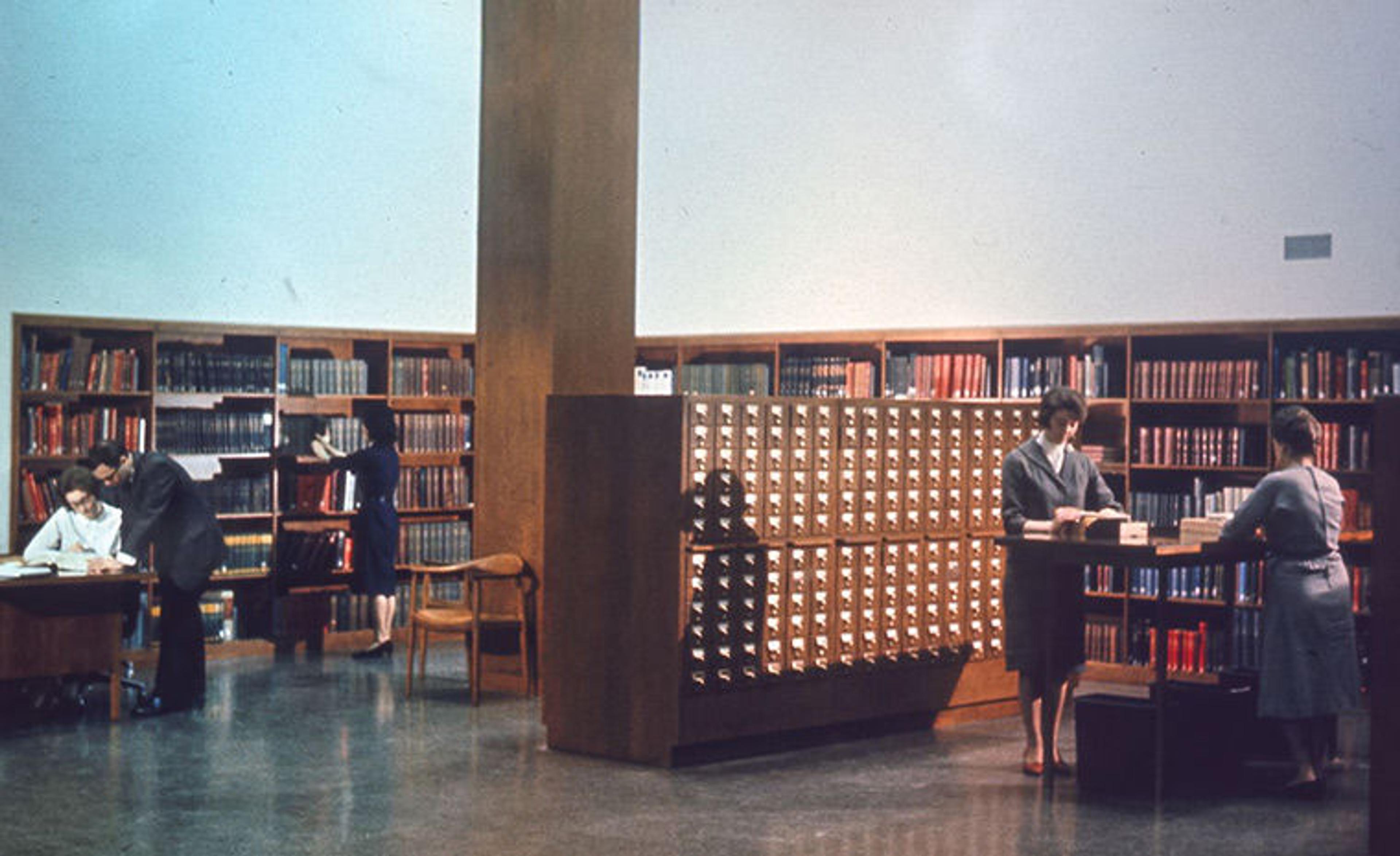
View of reference desk and card catalog, 1965
The new library, which opened in 1965, featured open spaces and a card-catalog area that dominated the reference room. A signature Danish Hans Wegner Kennedy arm chair can be seen above. The teak tables and Wegner chairs have held up well and are appreciated by the many library staff and patrons to this day.
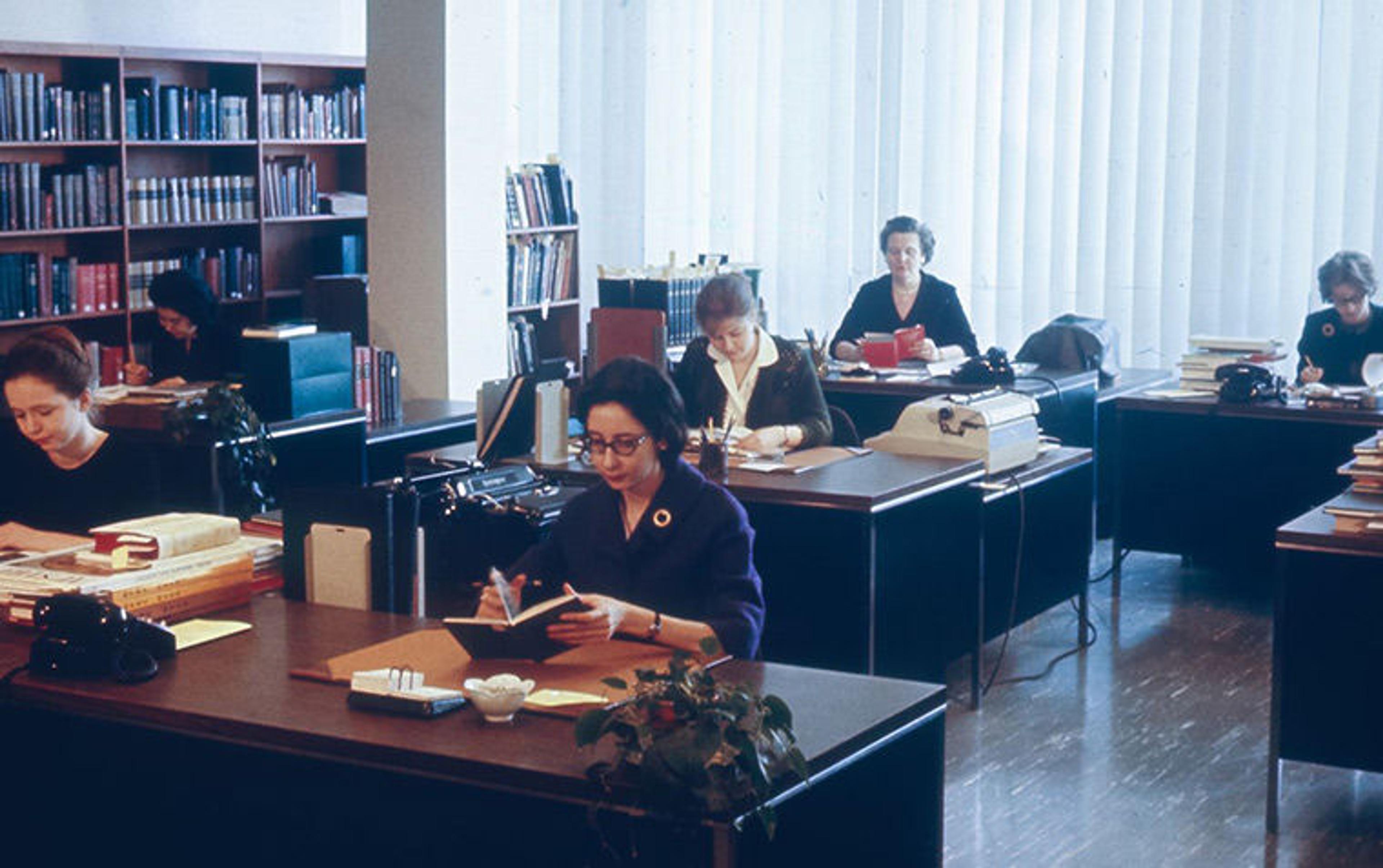
Cataloging room, 1965
The cataloging room had classic 1960s decor with an open-plan office design, electric typewriters, vertical blinds, and linoleum floors.
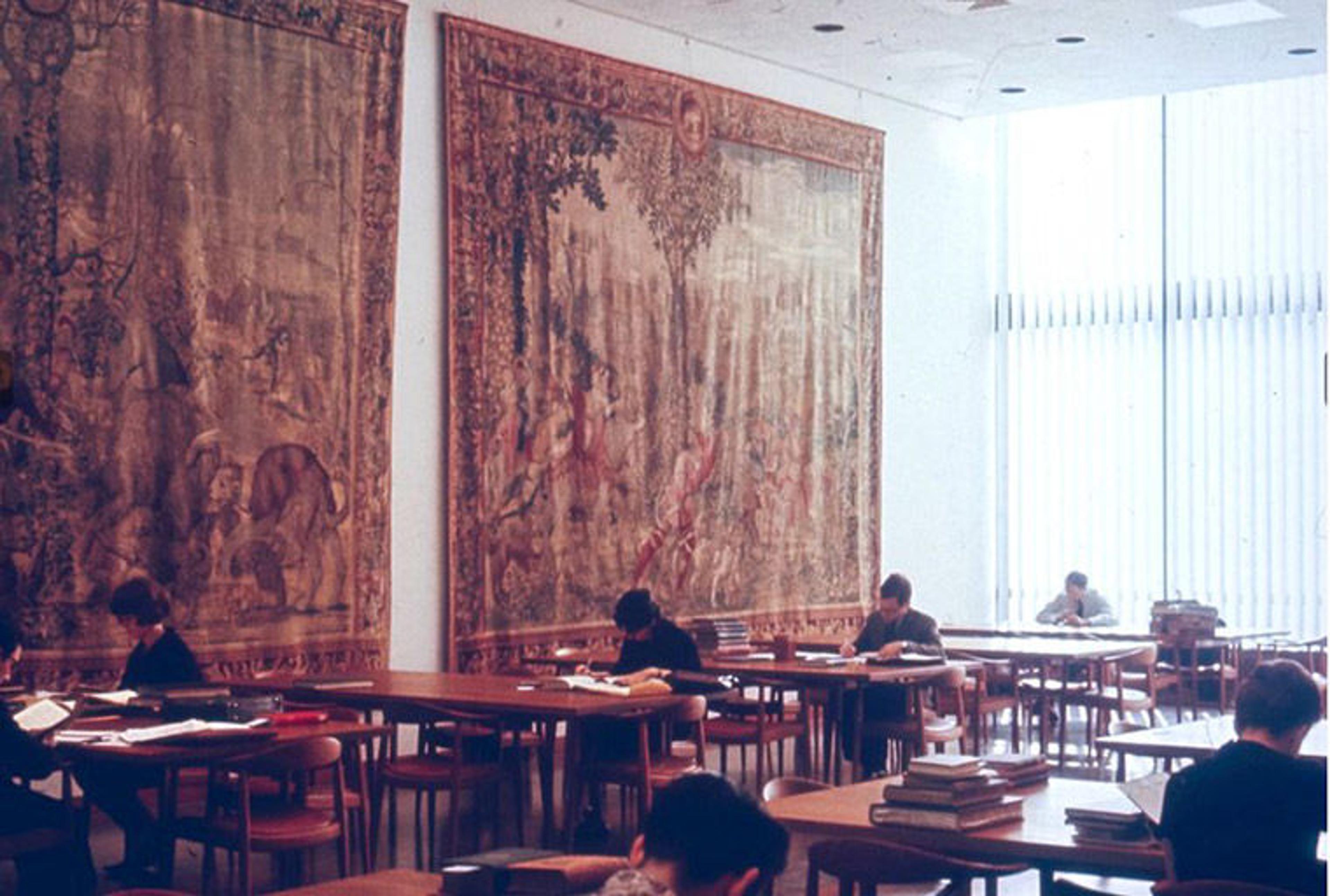
Reading room, 1965
The 1960s reading room was bright and open, with sun streaming through the glass-curtained wall. Tapestries from the Museum's collection initially hung on the wall, but were soon removed because of the excess of light.
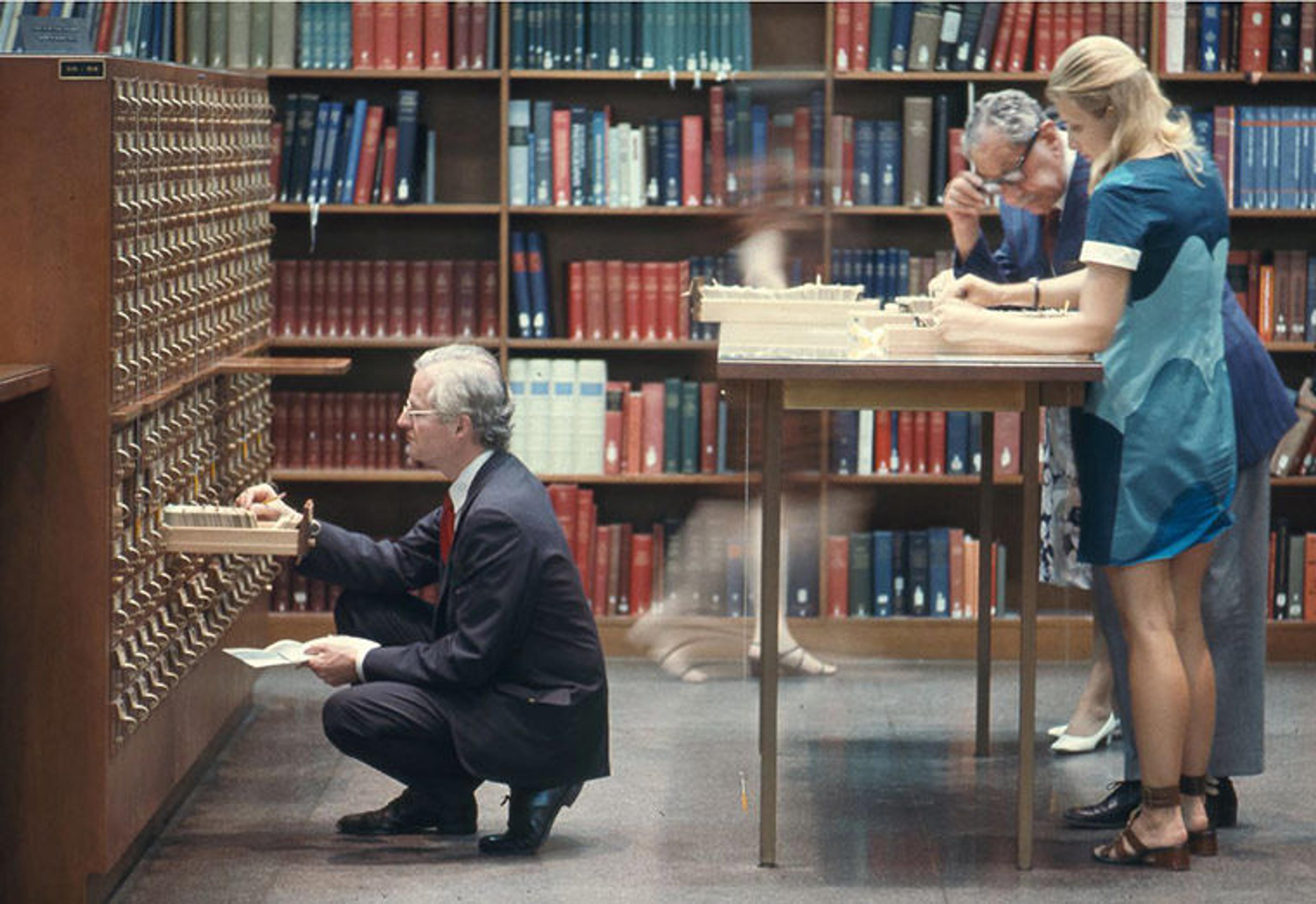
Card catalog, circa 1969
Before Watsonline, the library's online catalog, the library's collection was accessible via the card catalog, and the designated area was in active use from 1964 through the mid–2000s.
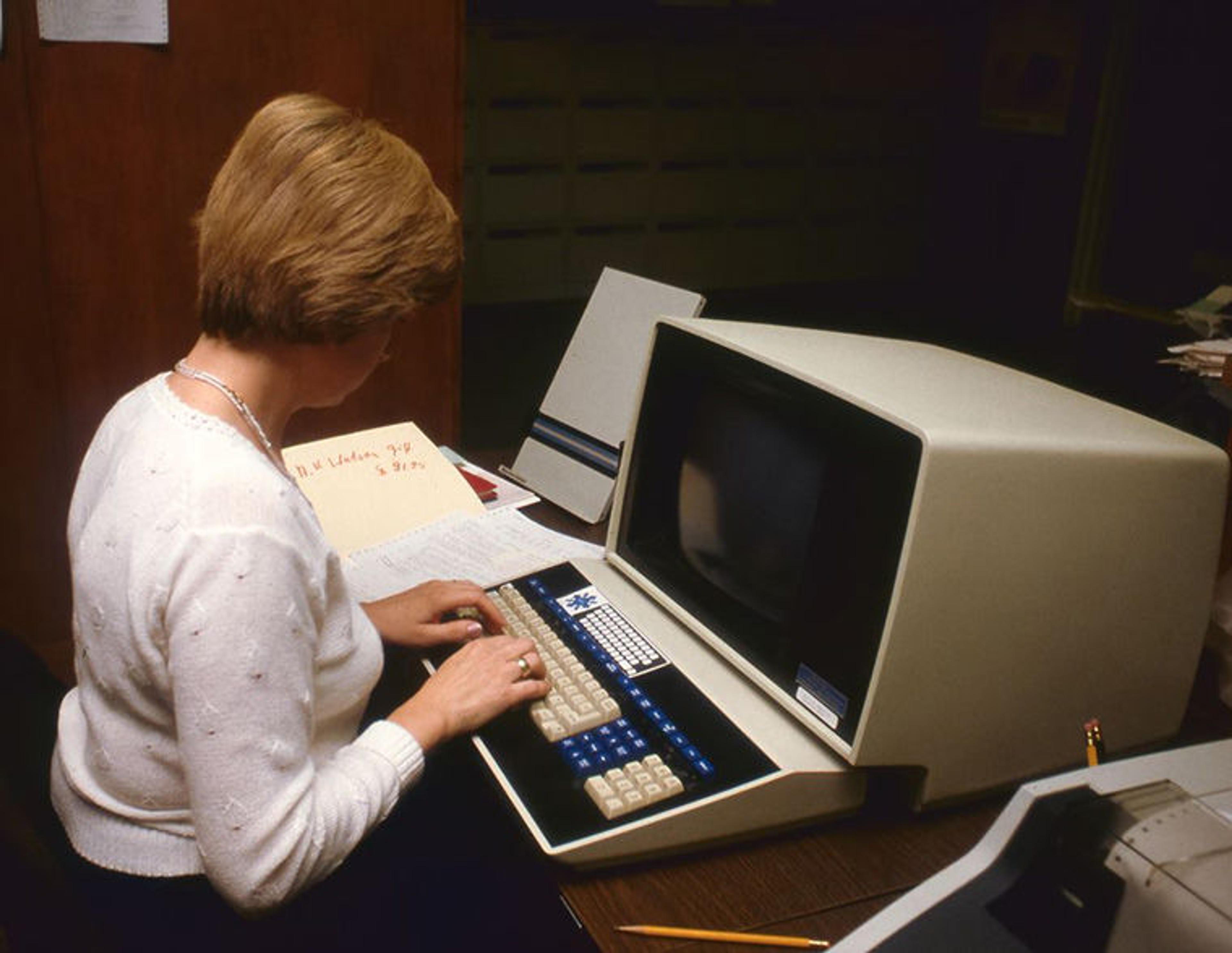
Former staff member, Katria Czerwoniak, circa 1983 using a Zentec computer
Watson Library has always been forward-thinking in adopting new technologies. Automation began in the early 1980s with the adoption of Innovac as our early library system. Above, retired staff member Katria Czerwoniak uses a Zentec computer to enter data.

Mindell Dubansky, Museum librarian, circa 1983, placing a book in a vintage press
Watson Library honors and celebrates its long-standing staff members. Mindell Dubansky began her career in Watson Library in 1982 as a book conservation assistant. Now head of book conservation, she has developed the library's preservation program for nearly forty years.

Senior departmental technician Ronald Fein checks through the cards of books in circulation as supervising departmental technician Pat Coman looks on (1989).
Ron Fein began working in the Museum in 1983, and in 1986 he began as a departmental technician in the library. Now supervising departmental technician, for over thirty years Ron has maintained order in the ever growing Watson stacks, while also working to meet the needs of Museum researchers at our busy circulation desk.
Please come by Watson Library and join us in celebrating all who have made and continue to make Watson Library a site of scholarship, enlightenment and collegiality for one hundred and fifty productive and exhilarating years.
For more in this series on the history of The Met's libraries, click here.
